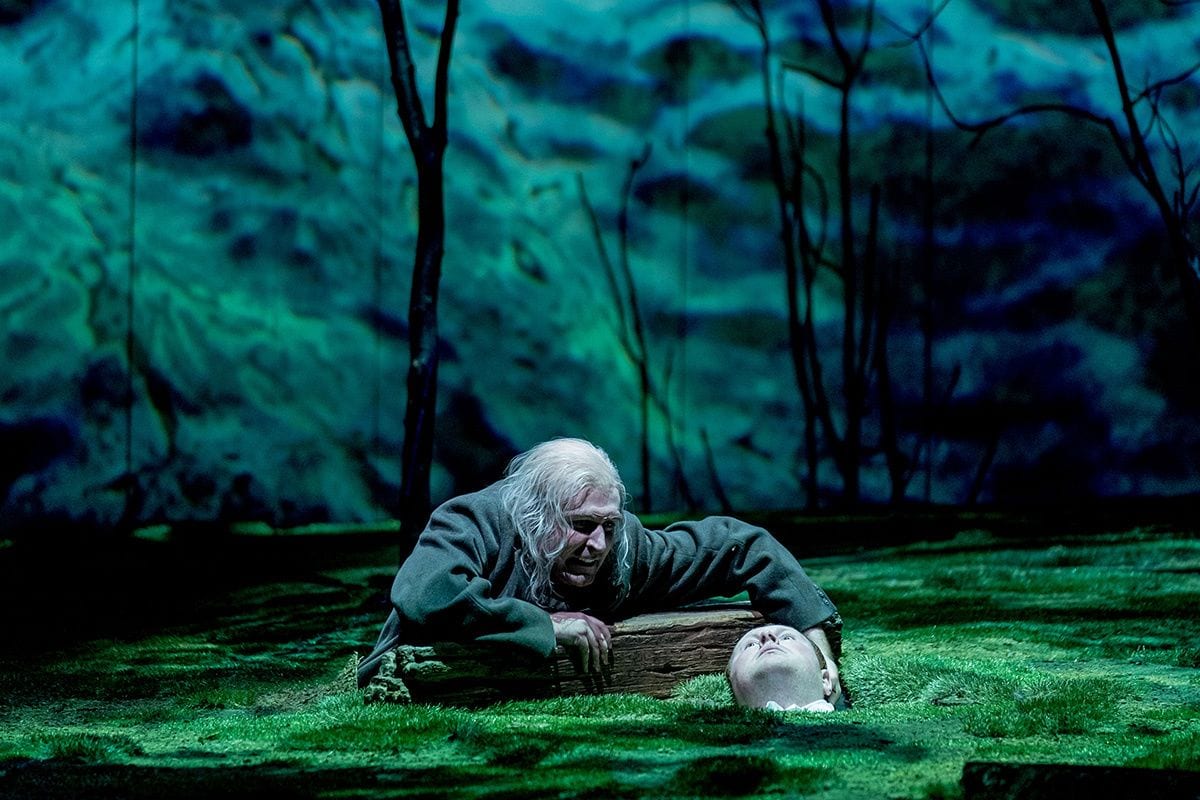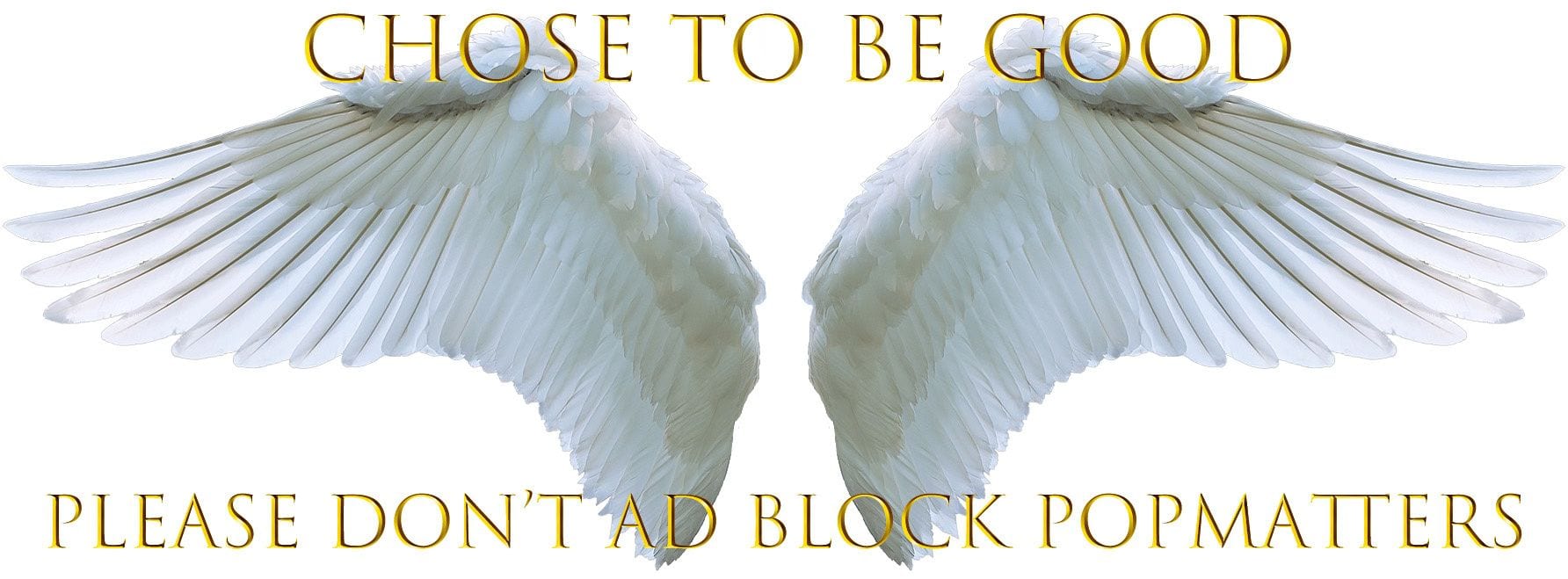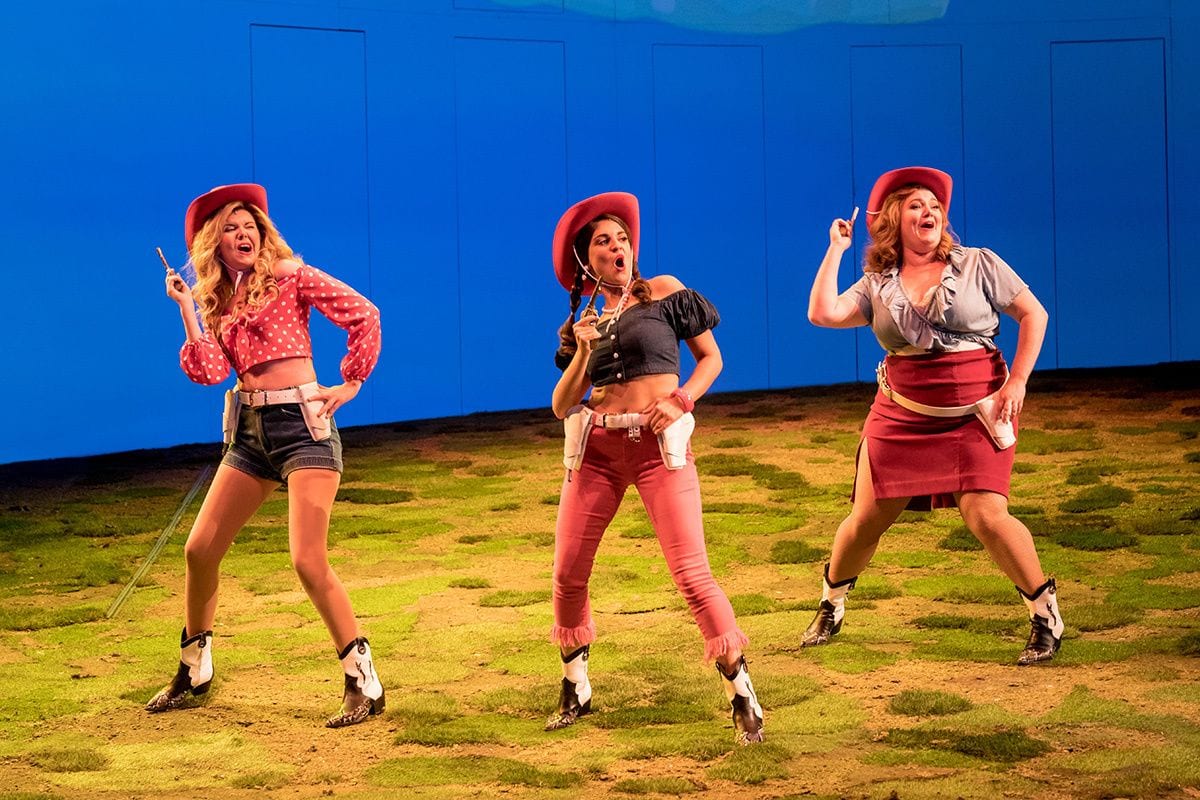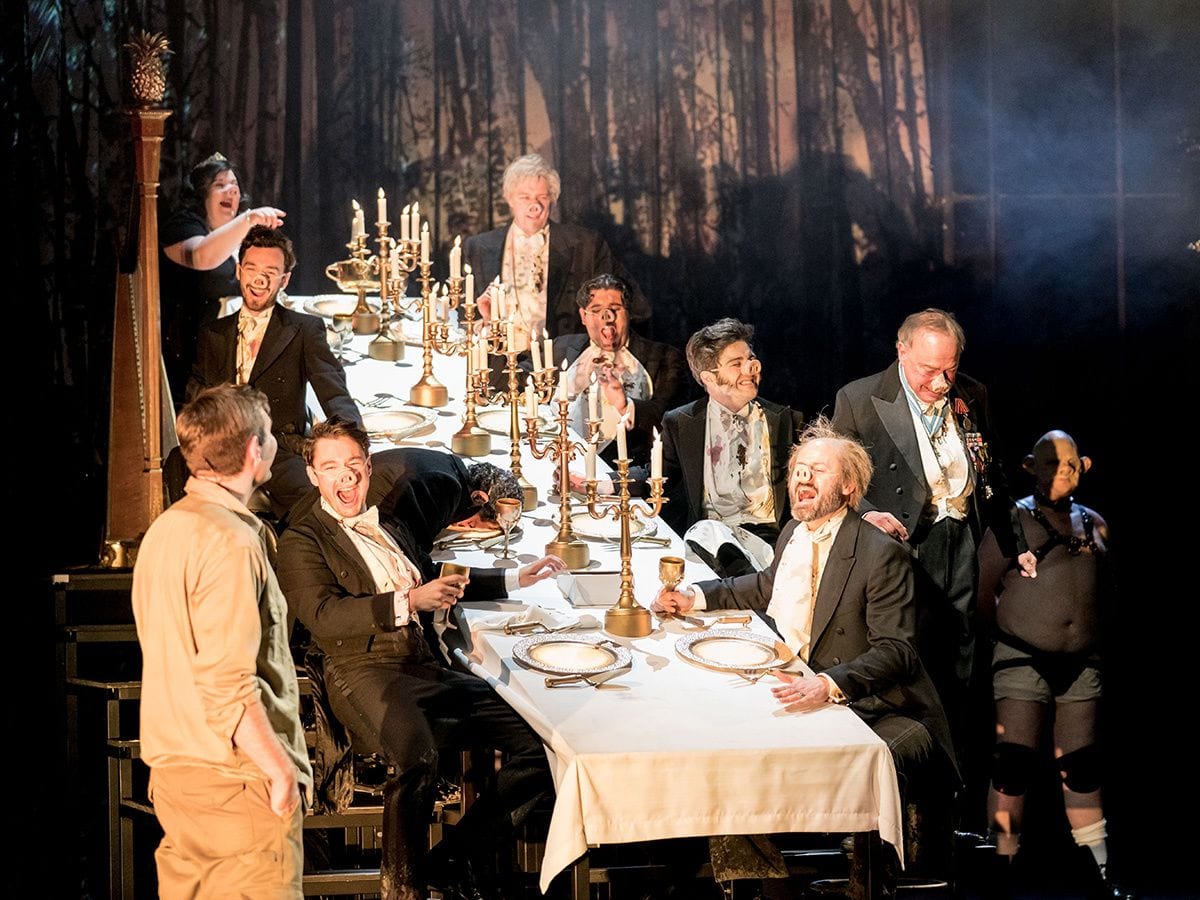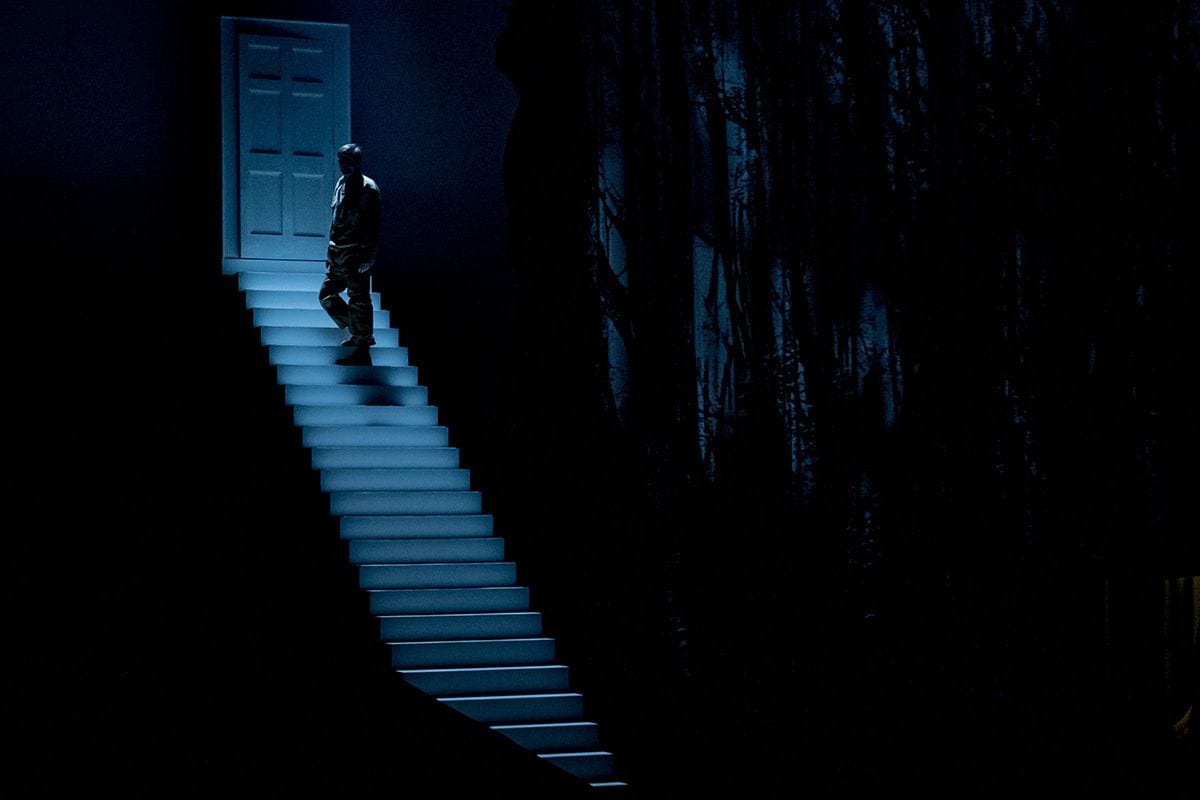
There are many reasons why Peer Gynt, the 19th century verse drama by the Norwegian playwright Henrik Ibsen, didn’t earn the canonization bestowed upon his realist masterpiece, A Doll’s House. Above all, one problem stands out: it’s simply too much. A vividly imagined picaresque spread across five acts, Peer Gynt challenged the basic capacities of the stage in Ibsen’s time of the mid-to-late 19th century. The play became a relatively minor piece in Ibsen’s oeuvre, even though it’s arguably his boldest experiment for the theatre.
This tale of a Norwegian everyman who aspires to become a legend takes the audience from the titular character’s homeland to several African locales, including Morocco and Egypt. A ship shatters at sea. The protagonist finds himself captured by trolls after a drunken night, and nearly becomes one himself. (The song “In the Hall of the Mountain King” originates in this play, for which Edvard Grieg was commissioned to write a score.) If you just read a plot synopsis, Peer Gynt sounds more like a swashbuckling film to be produced by Jerry Bruckheimer than a work by one of the luminaries of modern drama.
Of course, even if theatre companies can’t do on the stage what a filmmaker can do with a green screen and a CGI budget, stagecraft has come a long way since the days of Ibsen. Major productions on Broadway and the West End expand the capabilities of the stage every year. For that reason, one might think that now is a good time to test the plausibility of Ibsen’s imagination in Peer Gynt: with more resources than ever before available to theatres, could this play be fully realized to match its highly theatrical aspirations?
Sir David Hare, one of England’s leading playwrights, takes a stab at it with Peter Gynt, which began its limited run at London’s National Theatre at the end of June, in a co-production with the Edinburgh International Festival, where the play will run for ten days in August before returning for the rest of its run to the National Theatre. How did Hare choose to tackle Ibsen’s unwieldy epic? By turning the dial up on just about every element of the play’s theatricality.
Angel Wings by Zorro4 (Pixabay License / Pixabay)
Hare is not an obvious choice for a Gynt adaptation. Although he’s dabbled in a range of different theatrical modes – such as the one-man monologue (Via Dolorosa) and documentary theatre (Stuff Happens, a verité take on the lead-up to the Iraq War) – for the most part he’s best known for his realist political dramas, such as Skylight and his early 1990s “institutions” trilogy (Murmuring Judges, Racing Demon, and The Absence of War). Excepting its verse dialogue, Peter Gynt seems better suited for the ever-growing megalith that is Disney Theatrical Productions. Hare appears to be aware of this stylistic incongruity, as he more or less stays the course Ibsen set out in writing the play. The cover of the published Faber & Faber edition of Peter Gynt advertises Hare’s tale as “after Henrik Ibsen”, suggesting a loose borrowing of source material rather than a straight adaptation, but save for a few rearranged plot points, the action unfolds as it does in the original.
Like the Norwegian Peter, the Scottish Peter (James McArdle) talks a big game about his life, but has done little of any value, a fact about which he is constantly reminded by his mother and the residents of his town, who loathe him. So one night, while crashing the wedding of his ex-girlfriend, Peter decides to take decisive action to build a life of adventure. Although he’s nearly thrown off his course by a chance meet-almost-cute with a woman named Sabine (Anya Chalotra), Peter gets away with the bride, only to abandon her the next morning.
From there, he gallivants on to, as he puts it, “become an adjective” by living a “Gyntian” life. The subsequent journey flings Peter around the globe even further than Ibsen had imagined: by the time the three and a half hour play concludes, Peter has owned a golf course in Florida, survived a plane crash in a hyena-populated desert in northwest Africa, and narrowly escaped being thrown into a mental institution. And even though Hare updates the setting of the play to present-day Scotland, the encounter with the trolls – sans Grieg’s iconic theme – remains.
Working alongside director Jonathan Kent, Hare utilizes the full range of the Olivier Theatre, the largest of the National’s stages, to tell Peter’s story. One half of the circular stage is taken up with a grassy slope, which characters walk on, run on, and even pop out of at a few points. The other half of the stage is flat, which facilitates numerous moving setpieces, spanning an inventively imagined wedding scene on the back of a truck to an elaborate dinner table in the heart of a mountain. The slope ends at an upstage wall, which functions as a screen to project various sky and weather images. At the beginning of the play Gynt emerges from a backdrop of fluffy clouds in a blue sky, with a long white staircase emerging beneath him shortly thereafter. How else could such a mythic character appear?
Dani Heron, Hannah Visocchi and Lauren Ellis-Steele (Photo © Manuel Harlan / Courtesy of National Theatre)
The grandiosity of Hare and Kent’s staging flows naturally from Ibsen’s scenario, though the two men find unique ways to emphasize the larger-than-life character at the heart of the play. Peter Gynt even features several original songs, sung by, variously, a trio of cowgirls, a group of desert-dwelling opportunists in white dresses, and a wedding singer. These songs are fun at times – the wedding scene is an early highlight – but as the plot moves on, the amount of music dwindles. The result is that Peter Gynt seems a bit like a musical for which Hare forgot to write enough music.
If the musical cues sometimes fall flat, it helps that the register of Peter Gynt vacillates wildly enough that the considerable runtime doesn’t feel as long as advertised. Yet the tonal shifts which give the play its vibrant color also prove its undoing. Cartoonish interpretations of mythology shift into political satire that’s more Saturday Night Live than National Theatre. Gynt’s stint in Florida occurs after he becomes an enormously successful, egotistical businessman who owns a chain of golf courses, all of which advertise his name in giant letters. A short game of hangman, that allusion.
Act Two (there are three in Hare’s script) concludes with a violent scene that’s followed in the opening of Act Three by a tableau of Peter on a boat at sea, where he encounters what seems to be a vampire – easily Hare’s weirdest character detail. (The vampire is known simply as “Strange Passenger” in the Ibsen.) Act Two also features a use of location cards which gestures toward epic theatre in the Brechtian sense, but that political angle fails to develop into anything substantial. The constantly shifting ground of Peter Gynt does inevitably derive from its source material, however, which even in a spartan production will be grandiose. (In that way, Peer Gynt might be called Ibsen’s Pericles.) But Hare struggles with the baggy Ibsen script, especially when he throws in some forced topical references to things like Instagram influencers and the beloved UK chicken chain Nando’s.
McArdle does considerable heavy lifting with this banquet of a script. If a lesser actor were to have occupied the role of Peter, the whole production would flounder. Peter is never wholly sympathetic; despite his somewhat angelic entrance at the beginning of the play, from the moment he opens his mouth, he establishes himself as a blowhard. But McArdle dives headfirst into the role, so much so that it’s easy to get invested in his character arc, even when he, in a scene containing Hare’s sharpest political commentary, transforms into a pseudo-spiritual “guru” who preaches empowerment to the billionaires of the world.
(Photo © Manuel Harlan / Courtesy of National Theatre)
By the end of the play Peter is an old and weary man, regretful of all the time he’s wasted. Forgiveness is a tall order, but we can at least understand how easy it is to get lost down the wrong path only to realize too late the error of our ways. The poignant (if by the end repetitive) message of Hare’s fable, that selfishness in the guise of “self-improvement” ultimately amounts to destructive solipsism, is both an orthodox interpretation of Ibsen’s work and a pertinent message to a late capitalist audience.
The rest of the large ensemble cast ably revolves around McArdle’s domineering lead, with Ann Louise Ross giving a tough and tender performance as Agatha, Peter’s mother. The only bum note is the writing of Chalotra’s role. She’s meant to be the all-important love of Peter’s life, and there is chemistry between her and McArdle in the few scenes they share. But the role is too thinly realized for her return at the end of the play — she’s gone for the majority of this lengthy drama — to land with the emotional weight Hare intended for her character. An excellent actor, Chalotra deserved better. Still, the company does a remarkable job moving between nearly 40 different quick-change characters. The stage really does come to feel as large as the world Peter traverses.
Peter Gynt proves that some plays can be so big that they cannot help but entertain. At the same time, it also demonstrates that no play can be too big to fail – and, in fact, some plays are all the more likely to fail for being so big. Hare has accomplished a great deal as a dramatist, so much so that he can be commended for wrestling with one of the oft-overlooked giants of modern drama rather than resting on his laurels.
Perhaps, in the end, Ibsen crafted an untamable dramatic narrative, one with a scope grander than the stage allows. (For this critic’s money, Brand is the best of Ibsen’s experiments in verse drama — nearly as long as Peer Gynt, but without the narrative excesses.) Someday a playwright may rise to the task that Hare, like many others before him, gave himself with this Ibsen play. For now, what we have in Peter Gynt is an entertaining but overstuffed spectacle, one whose impressive staging and convincing lead performance can’t wholly rescue its slapdash narrative and tone. It’s a frequently delightful three and a half hours, but it’s not quite the Gynt of the 21st century.
James McArdle (Photo © Manuel Harlan / Courtesy of National Theatre)

